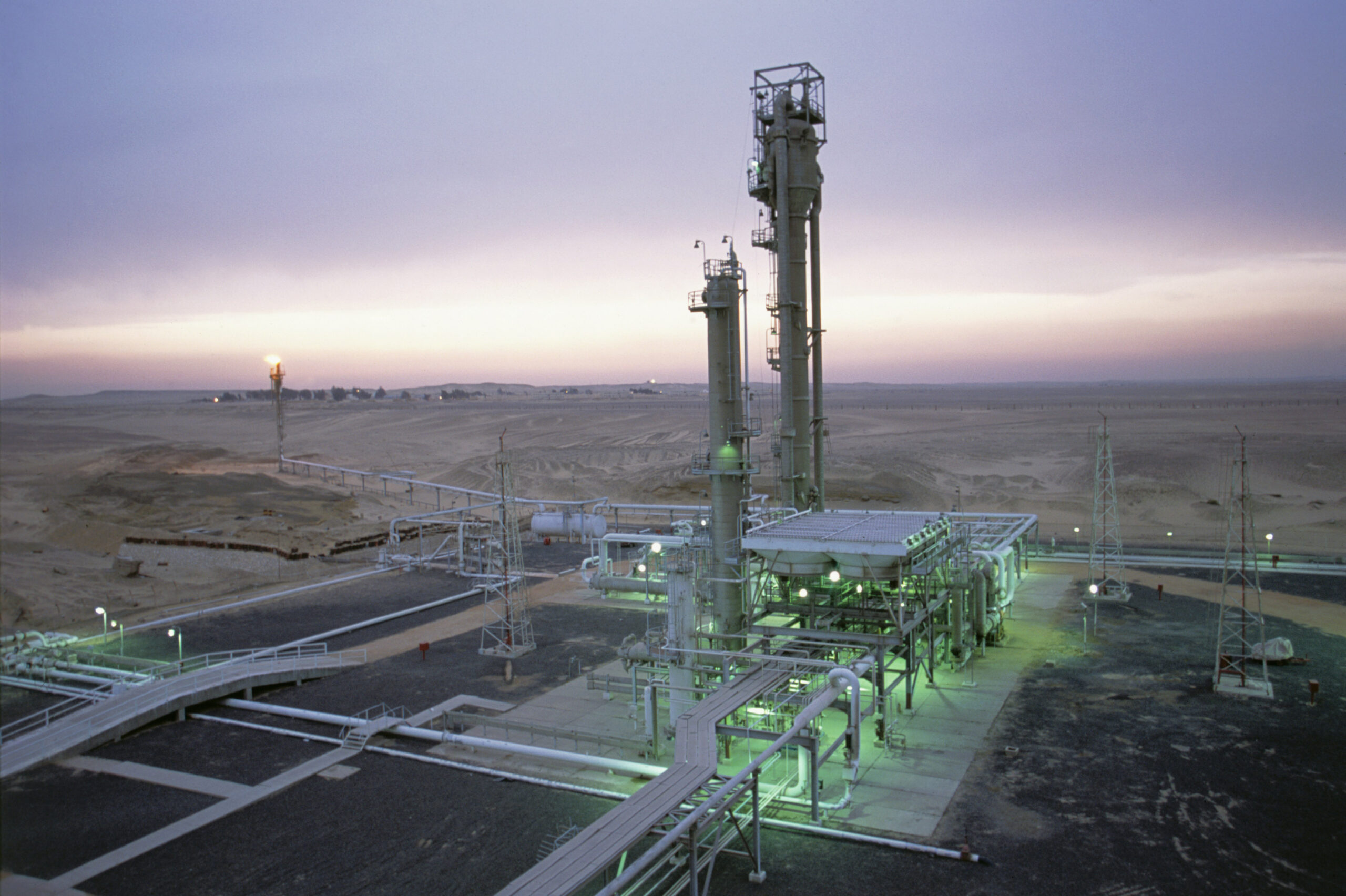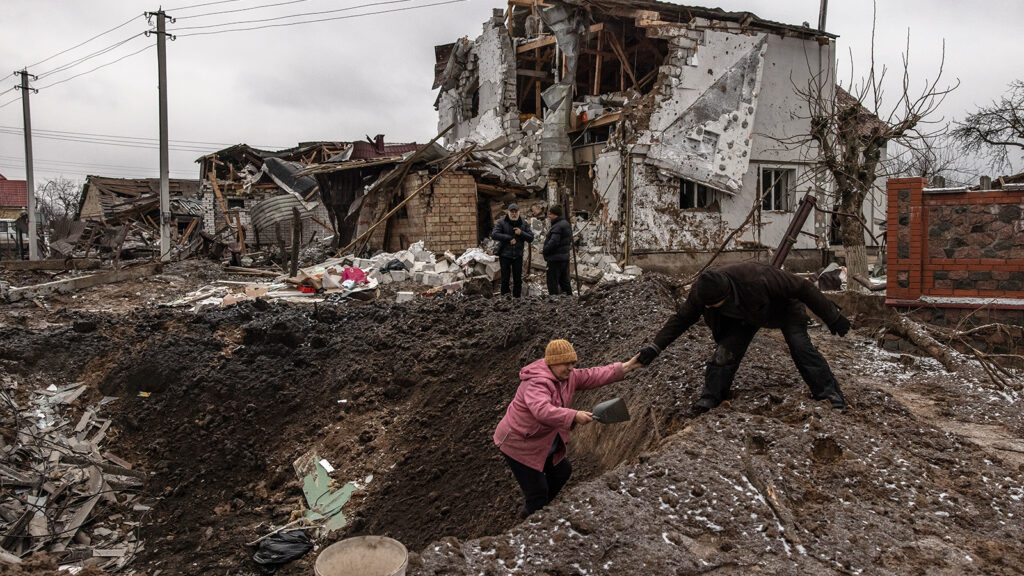The Eastern Mediterranean Could Strengthen Europe’s Energy Security

A gas refinery in the Western desert of Egypt. Egypt is one of the routes the EU considers most reliable for exporting Eastern Mediterranean gas to Europe.
Photo: Giles Barnard/Construction Photography/Avalon/Getty Images
The disruption to Europe’s energy supply brought about by the conflict in Ukraine has prompted a major reorientation in the EU’s energy strategy. As part of its attempt to end its dependency on Russian fossil fuels by 2030, the European Commission has devised a patchwork strategy tapping into several alternative sources including the U.S., Algeria, Qatar and several African countries.
In this context, the Eastern Mediterranean has emerged as a major component in the EU’s energy strategy. This was the strategy underpinning the recent June 17 MoU signed in Cairo between the EU Commission, Egypt, and Israel. The key aspect of this involves boosting exports of Israel’s natural gas to European markets via Egypt’s LNG plants in Damietta and Idku on the Mediterranean coast.
This trilateral MoU has the potential to leverage ongoing regional cooperation schemes around natural gas to transform the region’s energy geopolitics and weave the Eastern Mediterranean more tightly into the EU’s emerging energy diplomacy.
Egypt Emerges As a Regional Energy Hub
The MoU effectively consolidates Egypt’s emergence as a regional energy hub, the outcome of a decade-long effort by Egypt to put itself at the center of regional cooperation efforts to maximize the benefits from the recent natural gas discoveries in Egypt, Israel and Cyprus.
The building blocks of this strategy comprise the establishment of the East Med Gas Forum, an Egyptian initiative bringing together producing and consumer countries of natural gas as well as industry players. It supports long-term planning; a growing energy partnership between Israel and Egypt, whereby Israeli gas is exported to Egypt both for local energy consumption as well as reexport; an agreement to bring future Cypriot gas to Egypt through an undersea pipeline; and Egypt’s well-established LNG infrastructure, which offers a readily available platform for the export of Eastern Mediterranean gas to global markets.
Together, these arrangements have enabled Egypt to become an aggregator of regional gas supplies, bringing in its own gas from Egypt’s Zohr field (845 billion cubic meters [bcm]), Israel’s Leviathan (622 bcm), and potentially Cyprus’ Aphrodite (127 bcm) and smaller Glaucus and Calypso fields in the future.
Egypt, thus, emerged as the most viable export route for the region’s significant gas reserves over other options that entail significant commercial and geopolitical risk.
The new price environment has prompted serious discussions between Egypt and several oil majors regarding the expansion of Egypt’s LNG infrastructure in order to handle greater volumes of gas.
Other Options Have Lost Their Appeal
One such option was the proposed EastMed-Poseidon project, which would export Israeli gas directly to European markets via a 12,000 km mostly undersea pipeline, connecting Israel’s offshore gas fields via Cyprus through Greece, terminating in Italy at an estimated cost of $7 billion.
This project has been plagued not only by the high cost and engineering challenges associated with its construction, but also by the fact it would traverse contested exclusive economic zones between Turkey, Cyprus and Greece that have long been a source of conflict in the Eastern Mediterranean. The expected lead times for construction would render such an undertaking impractical to alleviate Europe’s immediate energy crisis, which explains the U.S. administration’s growing opposition.
Turkey has also laid its claim to become the region’s energy hub, arguing that its extensive cross-border pipeline network is also the most cost-efficient way to transmit Israeli gas to Europe. However, the volatility of Turkey’s regional relationships and its entanglement in the region’s conflicts renders this option too prone to risk, despite Ankara’s recent attempts to break out of its regional diplomatic isolation.
That Egypt presents the most reliable route for exporting Eastern Mediterranean gas to Europe was the key underlying assumption driving the EU’s strategy to tap the region’s natural gas resources. In her comments during the signing ceremony in Cairo for the MOU, President of the European Commission Ursula von der Leyen stated, “We want to diversify to trustworthy suppliers, and Egypt is a trustworthy partner.”
The Region Could Provide 20% of Europe’s Gas
Initial assessments put the quantity of gas that can be immediately exported to Europe as increasing from the current 7 bcm (2022) to 10 bcm in 2023, which comprises about only 2.5% of Europe’s overall gas requirements. However, the clear intent of the tripartite MoU is to boost investment to significantly increase overall gas exports from the region.
Even before the MoU, the steep rise in EU gas prices started to shift LNG cargoes to European markets. Europe, thus, gradually became a much more competitive destination for Eastern Mediterranean gas over Asian spot markets, which saw an 8% fall in LNG imports, partly as a result of China’s economic slowdown.
This shift, in turn, had a number of important spillover effects on the region’s energy landscape. Israel announced a reversal of its policy to postpone further offshore exploration bid-rounds in keeping with its declared climate goal of net-zero emissions by 2050. Israel and Egypt are also in discussion to bring more volumes of Israeli gas to Egypt’s LNG terminals for reexport, primarily through the Arab Gas Pipeline via Jordan.
Moreover, the new price environment has prompted serious discussions between Egypt and several oil majors regarding the expansion of Egypt’s LNG infrastructure in order to handle greater volumes of gas. Together, these arrangements could increase Israeli and Egyptian gas exports to Europe to 30 bcm/year, accounting for roughly 20% of Russia’s gas supplies to EU markets.
Replacing Gas With Hydrogen
The tripartite MoU reaffirms the EU’s intention to phase out reliance on natural gas by 2030 in keeping with its target of achieving climate neutrality by 2050. Besides the immediate imperative of tapping the region’s natural gas resources, the MoU reflects a future-oriented approach toward the Eastern Mediterranean as a source of clean energy with a focus on promotion of hydrogen production through renewable energy as well as green energy projects.
This is in line with the Commission’s RePowerEU Plan, which identifies the Mediterranean as a major future hydrogen corridor. This assessment reflects a recognition of the growing potential of the Mediterranean region as a source of green energy.
The Eastern Mediterranean will figure prominently in this regard featuring both the Euro-African Interconnector, originating in Egypt, and the Euro-Asia Interconnector, originating in Israel as major sources of electricity supply to Europe.
Whether the focus is on hydrocarbons to mitigate the immediate energy impact of the war in Ukraine on the EU’s energy supply, or the EU’s future energy transition, the Eastern Mediterranean is emerging as a key regional arena for Europe’s energy security.






